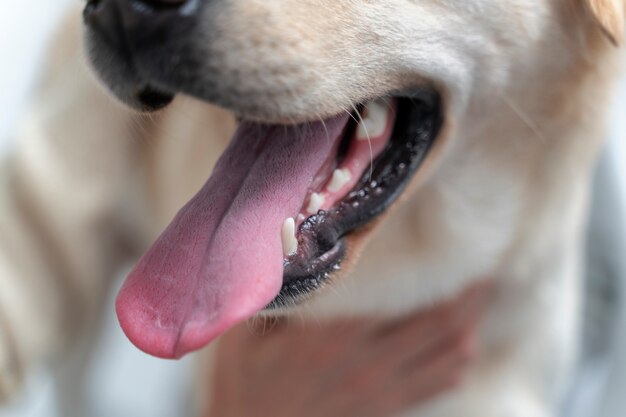

Why Do Dogs Lick Their Wounds?
We know dogs love to lick almost everything, but when it comes to wounds, things can get a bit confusing. Is it helpful for them to lick their wounds, or does it cause more problems?
While licking wounds might have a few benefits, the risks generally outweigh these, especially with larger wounds. This article will explore why dogs lick their wounds, the dangers of this behavior, and ways to prevent it.
Instinctive Behavior
Dogs licking their wounds is a natural response and is common among many animals, including cats, primates, and rodents. Since they can’t access disinfectants or bandages, they use their mouths to clean their injuries. Saliva contains useful substances that can aid in healing, like tissue factor, which helps with blood clotting, and Opiorphin, a pain-relieving chemical compound.
Historical beliefs
The idea that dog saliva can heal wounds has been around for centuries. Ancient Egyptians believed that a dog’s lick could help heal wounds and cure diseases. In ancient Greece, dogs at the shrine of Aesculapius were trained to lick patients’ wounds. Armenian culture also has a similar belief in Aralezes, mystical dog-like creatures that could heal the injured.
The Dangers
Despite some benefits, there are significant risks to letting dogs lick their wounds. It can slow down healing and even cause infections. A dog’s mouth contains billions of bacteria, some of which, like Pasteurella, can cause severe infections if they enter a wound.
The act of licking can also reopen old wounds by breaking down tissue, making them more vulnerable to infections and debris. This is especially dangerous for surgical sites, where sutures can be broken down, leading to infection. Surgery wounds are large and deep, making them highly susceptible if a dog licks them.
Preventing Wound Licking
To stop your dog from licking their wounds, you can use methods like an E-collar, bandages, a t-shirt, or distraction techniques for minor wounds. If your dog has had surgery, your vet might have already provided an E-collar and instructions on its use. While the “cone of shame” isn’t fun, it’s ultimately for your dog’s benefit.





